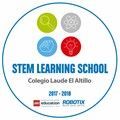Advantages and examples of gamification in infant education
The concept of gamification has been very present in our classrooms for several years. This educational proposal increases the motivation of students and achieves immediate results. The examples of gamification in infant education do not allow us to evaluate the results of this type of dynamics from the first academic years. At El Altillo International School we effectively apply gamification techniques in infant education, ensuring that our students assimilate the knowledge of this stage in an appropriate way.
What is gamification and its application in the educational environment?
Gamification arises from the application of game theory to the business and educational environment. Gamification is based on rewarding specific actions, in this case related to learning.
Gamification usually involves a competitive component, and is therefore related to continuous improvement. By applying the objectives of gamification in an academic environment, what we are looking for is for students to find extra motivation, to compete in a healthy environment and to improve day by day.
In recent years we have seen that games related to gamification are positive, and they start to be positive from the first school years. Gamification examples for children allow us to motivate students and help them to learn the knowledge that will be the basis of their education.
Examples of gamification for children
Behavioural points
During the first academic years, they must learn a series of civic behaviours that are as important as the technical learning that takes place during these years. The dynamic of behavioural points allows them to be motivated in the classroom and is very easy to implement.
It is simply a matter of awarding a series of points at the end of the week or month to assess the behaviour of the pupil. It is necessary to set a goal, and students who manage to reach this goal can get a prize.
Country roles
This gamification game is a classic, starting with giving each student a country to represent. The dynamics proposed by the teachers encourage them to reach agreements, negotiate and reach conclusions that are beneficial for all.
In higher grades, this game also allows them to deepen their knowledge of other cultures.
Languages with points
There are several language learning applications based on gamification, and this motivational process can also be applied in the classroom, so that children can improve their language learning quickly.
This process can be applied in many different ways and can be organised in teams or individually. The aim is to distribute a number of points, based on the language learning skills of each student.
Quiz games
At the end of the week we can carry out a summary of all the subjects to consolidate knowledge, including means of a gamification game in which everyone can participate, and points are awarded according to the correct answers.
The aim is that what has been learned throughout the week can be recovered and reviewed, motivating students through a game of rewards.
Gamification for reading
It is during the first years of school when the habit of reading is learned. Through gamification games we can not only get them to read, but also to do it in an attentive way, improving their reading comprehension.
Gamification games for reading are recommended from the first years of primary school, but can be maintained in later stages.
Digital gamification tools
Currently, there are many digital platforms that have created gamification-based projects for children. One of these platforms is Minecraft, a very popular video game that has developed a gamification proposal, aimed at teachers looking for activities of this type.
In reality, there are many digital alternatives aimed at proposing activities of this type to students, the main advantage being that the student perceives the digital environment as an added value.
Advantages of gamification activities for children
The main benefits of gamification during children’s courses are the following:
- The main advantage is that the student is motivated, and therefore, their capacity for learning will be much higher.
- Cooperation and, in general, teamwork will also be two concepts that are very present in the classroom during gamification games.
- From an early age, students get used to seeing the learning process as a series of increasingly complex challenges that are worth overcoming.
- Gamification also has a fun component that they love, and allows them to become more involved in the learning process.
- It promotes concentration, the student is aware that he or she has to overcome certain objectives and is focused on achieving them.
- Gamification also improves social skills and communication between students themselves.
- In short, gamification games improve learning and allow them to learn faster.
Early Childhood Education at El Altillo International School
At El Altillo International School we implement the most advanced teaching methods. We know how important the first academic years are for a student, that is why we work so that our infant students have all the resources they need, applying the best academic methodologies to help them improve every day.












